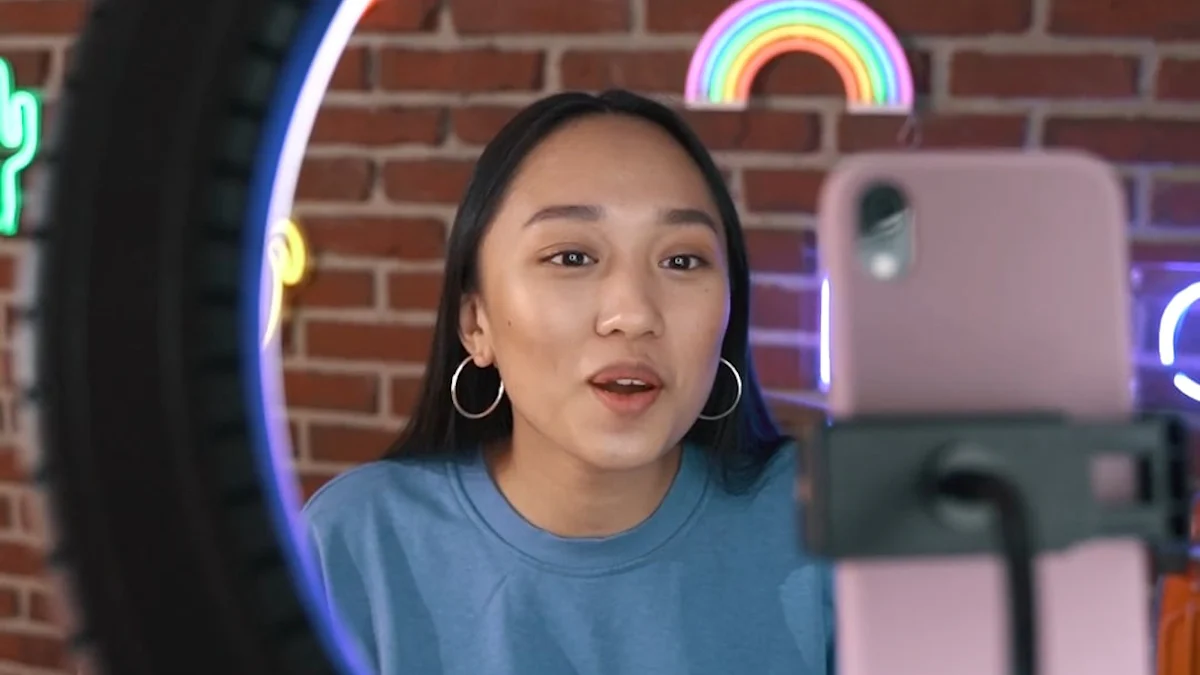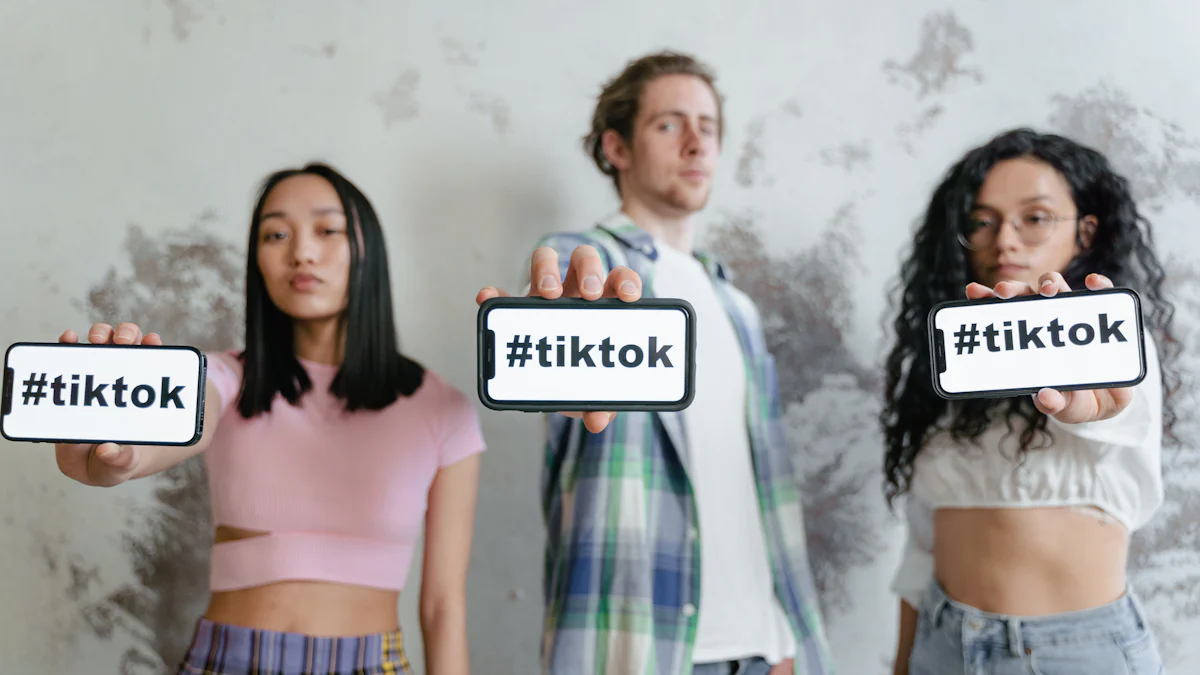The Rise of Micro-Influencers Driving Marketing Trends in 2025

Have you noticed how marketing feels more personal these days? That’s because micro-influencers are taking the spotlight in 2025, a trend highlighted in the latest influencer marketing news. These influencers, with their smaller but highly engaged audiences, are reshaping how brands connect with people. Unlike traditional influencers, they focus on authentic content that resonates with their followers. In fact, micro and nano-influencers often achieve higher engagement rates, giving brands a chance to build trust and loyalty. Did you know the influencer marketing industry is now worth $21.1 billion, with micro-influencers making up 47.3% of the space? Their relatability and genuine enthusiasm for products make them the go-to choice for brands aiming to stand out, as reported in recent influencer marketing news.
Understanding Micro-Influencers in 2025

Defining Micro and Nano Influencers
You’ve probably heard the terms micro-influencers and nano-influencers thrown around a lot lately. But what do they actually mean? Here’s a quick breakdown:
- A nano influencer has fewer than 10,000 followers. They often share casual, less polished content and interact closely with their audience.
- A micro-influencer has between 10,000 and 100,000 followers. They usually focus on a specific niche, like fitness, beauty, or tech, and build authority in that area.
Both types of influencers bring something unique to the table. While nano-influencers excel at creating intimate connections, micro-influencers combine relatability with a slightly broader reach. Together, they’re reshaping influencer marketing in 2025.
Key Characteristics of Micro-Influencers
What makes micro-influencers stand out? It’s all about authenticity and engagement. These influencers are known for their genuine content and niche expertise. Whether they’re sharing fitness tips or reviewing the latest gadgets, they know how to connect with their audience.
Micro-influencers typically have an engagement rate of around 3.86% on platforms like Instagram. That’s more than double the rate of macro or celebrity influencers, who average just 1.64%. Their relatability plays a big role here. They’re seen as peers rather than celebrities, which helps them build trust and loyalty.
Another key trait is their ability to foster community. They respond to comments, share personal insights, and make their followers feel valued. This sense of connection is why 82% of consumers are highly likely to follow a recommendation from a micro-influencer.
Why Micro-Influencers Are Thriving in Influencer Marketing
So, why are micro-influencers thriving in 2025? For starters, they’re cost-effective. Brands can collaborate with multiple micro-influencers for the price of one macro influencer, maximizing their marketing budget.
Their niche focus is another big advantage. Whether it’s vegan recipes or sustainable fashion, micro-influencers help brands target specific audiences effectively. This targeted approach often leads to higher ROI.
Finally, authenticity is king. Consumers crave genuine content, and 89% of them prioritize it when making purchasing decisions. Micro and nano influencers deliver just that, making them indispensable in today’s influencer marketing landscape.
Influencer Marketing News: Trends Shaped by Micro-Influencers
The Popularity of Short-Form Content
Short-form content is everywhere in 2025, and micro-influencers are leading the charge. Why? It’s quick, engaging, and perfect for busy lifestyles. Platforms like TikTok and Instagram make it easy for influencers to create bite-sized videos that grab attention instantly. These videos are also highly shareable, which means your brand can reach a wider audience without much effort.
Micro-influencers excel at using short-form content to tell stories. They might share a behind-the-scenes look at their day or a quick product demo. This kind of content feels personal and relatable, which is why it works so well. If you’re a brand, collaborating with micro-influencers on short-form videos can help you connect with your audience in a way that feels authentic and fun.
User-Generated Content and Micro-Influencers
User-generated content (UGC) is a game-changer in influencer marketing. It’s real, relatable, and comes straight from customers. Micro-influencers know how to inspire their followers to create this kind of content. They might run a contest or ask their audience to share their experiences with a product. These strategies not only boost engagement but also build trust.
When followers see real people using and loving a product, they’re more likely to believe in its value. UGC also amplifies your brand’s reach. A single post from a happy customer can spark a ripple effect, spreading your message far and wide. By partnering with micro-influencers, you can tap into this powerful tool to enhance your campaigns.
Real-Time Engagement and Community Building
Micro-influencers shine when it comes to building communities. They don’t just post content; they interact with their followers. Whether it’s responding to comments or hosting live Q&A sessions, they make their audience feel seen and valued. This real-time engagement fosters loyalty and creates a sense of belonging.
Their relatability plays a big role here. Unlike celebrities, micro-influencers feel like peers. They share personal stories and honest reviews, which makes their recommendations more trustworthy. This approach not only boosts engagement but also strengthens the bond between the influencer and their community. If you want to build a loyal customer base, micro-influencers are your best bet.
Strategic Benefits of Micro-Influencers for Brands

Higher ROI and Cost Efficiency
When it comes to influencer marketing, micro-influencers deliver exceptional value for your investment. They consistently outperform larger influencers in terms of engagement and cost-effectiveness. Did you know that influencer marketing generates 11 times greater ROI than traditional digital marketing? Micro-influencers take this even further, with campaigns often delivering double the engagement rates of macro-influencers.
Their cost efficiency is another major advantage. While mega-influencers may charge $10,000 or more per post, micro-influencers typically charge between $100 and $500. This allows you to collaborate with multiple influencers for the price of one high-profile partnership. By spreading your budget across several micro-influencers, you can reach diverse audiences and maximize your campaign’s impact without breaking the bank.
Building Long-Term Collaborations
Long-term partnerships with micro-influencers can transform your brand’s marketing strategy. These influencers have deeply engaged audiences, which leads to higher interaction rates and stronger connections. Their authenticity fosters genuine consumer trust, making their endorsements feel more credible.
Consistency is another benefit of long-term partnerships. When influencers repeatedly promote your brand, their messaging aligns with your values, reinforcing your identity. Over time, this builds familiarity and loyalty among their followers. Imagine the opportunities this creates for your brand to establish a lasting presence in your target market. Plus, micro-influencers’ cost-effectiveness makes these ongoing collaborations more feasible compared to larger influencers.
Adaptability to Marketing Trends
Micro-influencers are incredibly adaptable, which makes them ideal partners in today’s fast-changing influencer marketing trends. They embrace new technologies like AI-driven tools and gamified campaigns to keep their content fresh and engaging. Many also prioritize sustainability and diversity, aligning with modern consumer values.
Their smaller scale allows them to pivot quickly when trends shift. For example, they can easily adjust their content to fit new social media algorithms or experiment with emerging platforms. This flexibility ensures your influencer collaborations stay relevant and effective. By working with niche micro-influencers, you can tap into their ability to connect with audiences in meaningful ways, even as the digital landscape evolves.
Overcoming Challenges in Micro-Influencer Marketing
Ensuring Compliance with Advertising Regulations
Navigating advertising regulations can feel tricky, but it’s essential for maintaining transparency and accountability in influencer marketing. You need to ensure that influencers follow FTC guidelines, which require them to disclose any material connection with your brand. This includes freebies, discounts, or paid collaborations. Clear tags like #Ad or #Sponsored are non-negotiable to avoid fines and maintain ethical practices.
To make compliance easier, include disclosure requirements in your influencer briefs. Educate influencers about why transparency matters and monitor their posts for adherence. Tighten contracts to include compliance clauses and ensure all product claims are truthful. Treat every campaign with the same legal care by involving your compliance team early. This approach protects your brand and builds trust with your audience.
Tip: Use tools to track influencer content and ensure compliance with GDPR and CCPA standards for data protection.
Measuring ROI and Campaign Success
Measuring the success of your micro-influencer campaigns is crucial. But how do you know if your investment paid off? Start by tracking engagement metrics like likes, comments, shares, and saves. These numbers show how well the content resonates with the audience.
You can also monitor conversions using unique discount codes or affiliate links. This helps you see how many sales came directly from the campaign. Tools like Instagram Insights or YouTube Analytics make it easy to analyze reach, impressions, and overall performance. Don’t forget to assess brand mentions and sentiment during the campaign. Positive feedback often signals a successful collaboration.
Pro Tip: Earned Media Value (EMV) is a great way to estimate ROI. It calculates the value of exposure gained through influencer content compared to traditional ads.
Managing Multiple Influencer Relationships
Working with several micro-influencers can feel overwhelming. You might struggle to find the right influencers or manage multiple partnerships at once. Many micro-influencers don’t have management teams, which can make communication tricky.
To streamline the process, use project management tools to track deliverables and performance metrics. Create a detailed campaign brief template to ensure consistent messaging. Clear guidelines and expectations help influencers align with your vision. Transparent communication is key—make sure everyone knows their role in the campaign.
Note: Platforms that filter influencers by location, niche, and engagement rates can save you time when scouting for talent.
By addressing these challenges head-on, you can build stronger, more effective campaigns with micro-influencers.
Micro-influencers have reshaped marketing in 2025 by creating authentic connections with their audiences. Their ability to engage niche communities has made them invaluable for brands seeking higher ROI and meaningful engagement. Unlike larger influencers, they offer genuine endorsements that feel like personal recommendations, boosting trust and credibility.
To make the most of these partnerships, focus on authenticity. Encourage influencers to share real-life experiences with your products. Use data-driven strategies to track engagement rates, conversions, and sentiment. Tools like UTM links or discount codes can help you measure success. By collaborating with micro-influencers, you can craft campaigns that resonate deeply with your audience.
Tip: Build long-term relationships with influencers who align with your brand values. Their consistent support can amplify your message and foster loyalty.
FAQ
What makes micro-influencers different from traditional influencers?
Micro-influencers focus on smaller, niche audiences. They prioritize authenticity and personal connections over mass appeal. Unlike traditional influencers, they engage more directly with followers, making their recommendations feel genuine. This approach builds trust and loyalty, which is why brands love working with them.
How do I find the right micro-influencers for my brand?
Start by identifying your target audience. Use influencer marketing platforms to filter by niche, location, and engagement rates. Check their content style and follower interactions. Look for influencers who align with your brand values and have an active, engaged community.
Are micro-influencers effective for small businesses?
Absolutely! Micro-influencers are cost-effective and perfect for reaching niche markets. Their followers trust their recommendations, which can drive sales and brand awareness. Small businesses can collaborate with multiple micro-influencers to maximize reach without overspending.
How can I measure the success of a micro-influencer campaign?
Track metrics like engagement (likes, comments, shares), conversions (using discount codes or affiliate links), and reach. Tools like Instagram Insights or Google Analytics can help. Don’t forget to monitor brand sentiment and customer feedback during the campaign.
Do micro-influencers work on all social media platforms?
Yes, but their effectiveness depends on the platform and audience. Instagram and TikTok are popular for visual content, while YouTube works well for in-depth reviews. Choose platforms where your target audience spends the most time.
Tip: Test campaigns on different platforms to see what works best for your brand.
See Also
Key Influencer Marketing Trends To Monitor This Year
15 Essential Influencer Marketing Platforms For 2024
Effective TikTok Influencer Marketing Tactics For 2024
